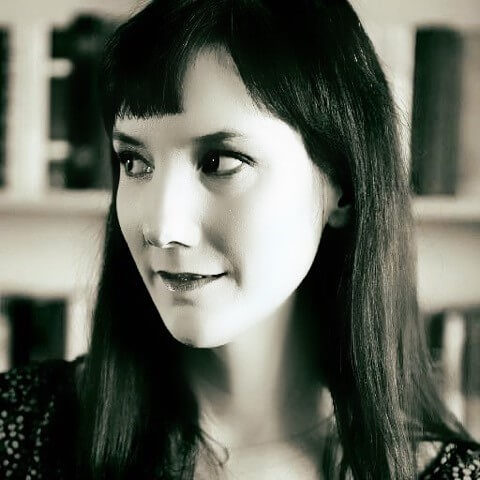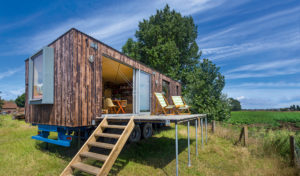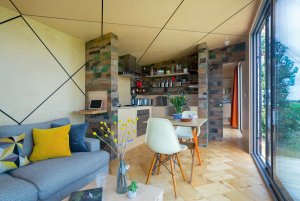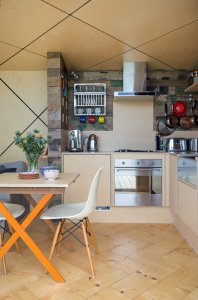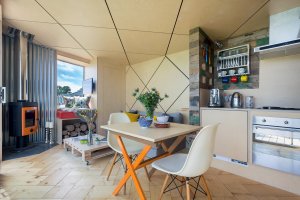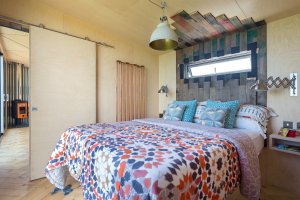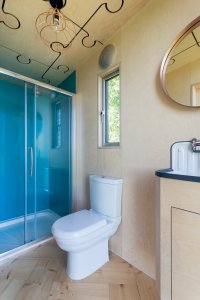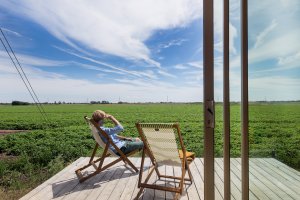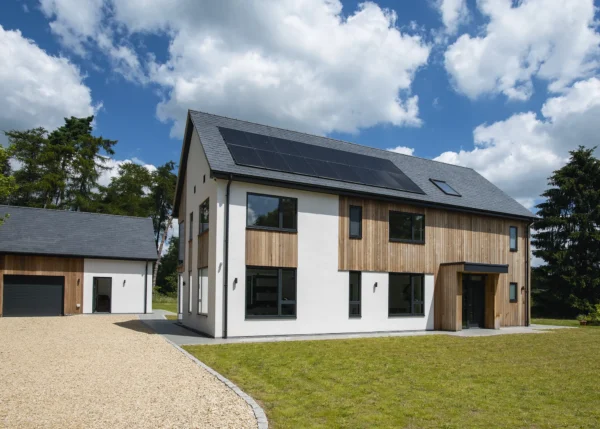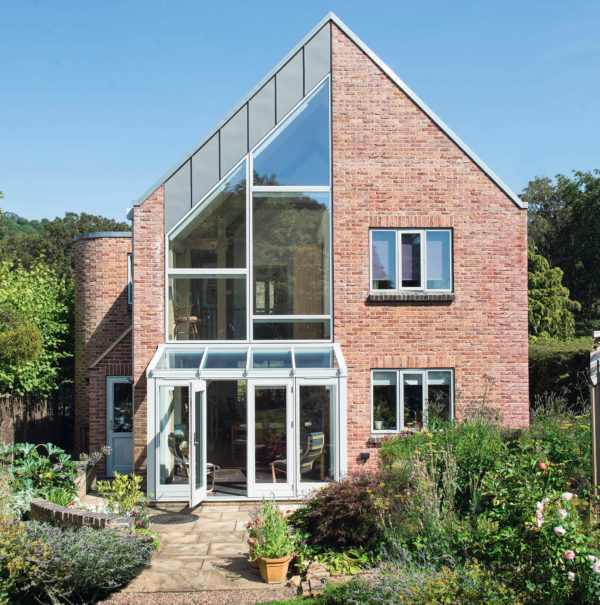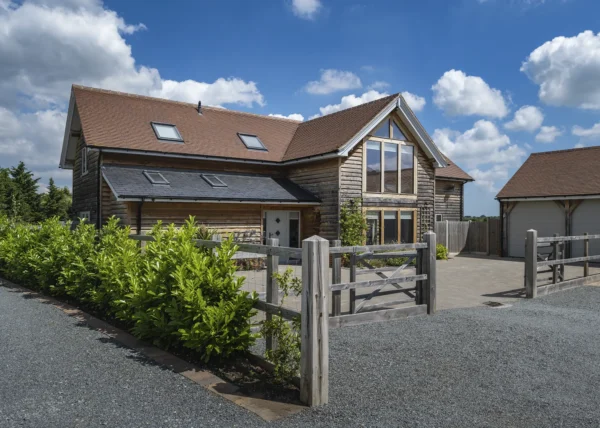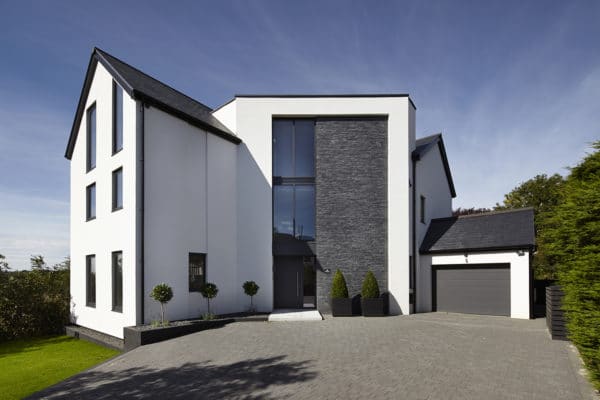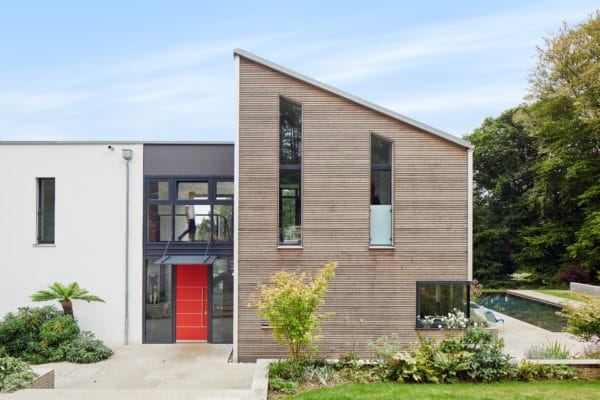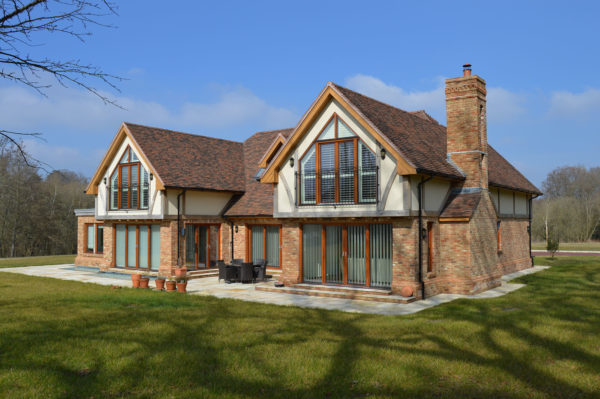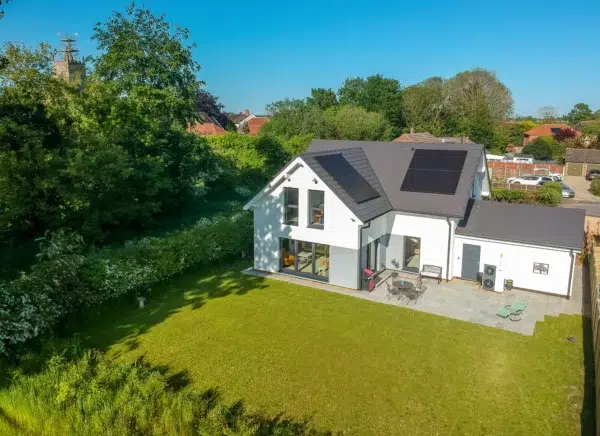Tiny House Mobile Cabin
It was while renting a cottage, and spending much of his hard-earned cash for little return, that Freddie Pack decided he wanted to build his own home – seeing it as a much more cost-effective way of life for himself and girlfriend, Katie McNie.
Luckily for the couple, finding a plot would prove to be reasonably straightforward. Freddie’s mother runs the family farm on Romney Marsh in Kent, providing the perfect backdrop for the project.
However, with only a small budget available, Freddie was going to have to get creative. “I have always had a passion for tiny structures,” he says. “My farming background gave me the idea of building a cabin on a trailer – it seemed like an interesting, yet achievable, thing to do.”
It was after a chat with friend and architect Rob Pollard that Freddie became convinced he could make his dream a reality.
Construction and planning
The couple moved in with Freddie’s mother and bought a second-hand flat-bed bale trailer from Yorkshire. “It was good value for money at £2,700 plus VAT and was a super-sturdy steel structure,” says Freddie. Rob then drew up designs and Freddie began calling on his building contacts to get things rolling.
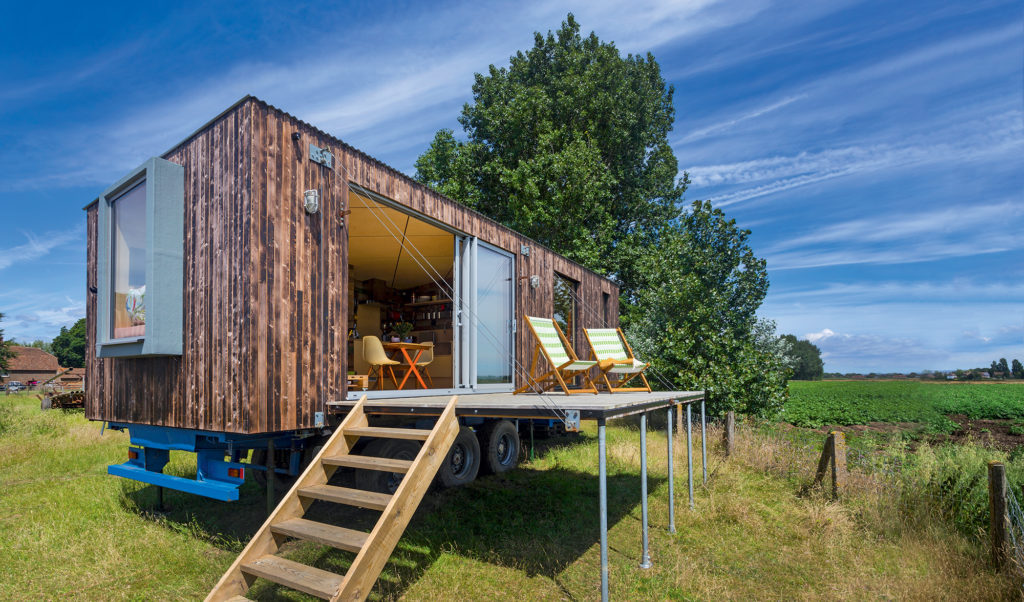
The cabin was designed with wooden steps leading up to the foldaway deck, which is operated on a winch system
It was smooth sailing when it came to securing planning. As Freddie works part time on the farm, alongside his project management role, there was a strong argument that the dwelling would be needed to serve a rural business. What’s more, the trailer is movable and well within the established volume limits for mobile homes – so in theory full planning permission wasn’t required.
- NamesFreddie Pack & Katie McNie
- LocationRomney Marsh, Kent
- Type of ProjectSelf-build
- StyleContemporary
- Construction methodTimber frame
- Land costAlready owned (family farm)
- House size30m2 (plus 10.5m2 deck)
- Project cost£46,800
- Project cost per m2£1,560
- Construction timeFive months
- Current value£70,000
Nevertheless, Freddie decided to submit a formal application for peace of mind and to make life easier in the future. “It meant there was no danger we would have to move our home every 28 days; plus the long-term plan, when Katie and I have outgrown it, is to rent the cabin out as a holiday let,” he says.
The site is similar in many ways to a caravan pitch – which meant the pair needed to pay careful attention to services. The cabin is connected to the mains water and electricity supplies, but they run their LPG Vokera combi boiler off two gas canisters.
With no need for foundations, the couple were free to select their perfect location – and settled on a spot with breathtaking views across the potato fields. Three sets of acrow props take the weight of the cabin off the trailer’s suspension.
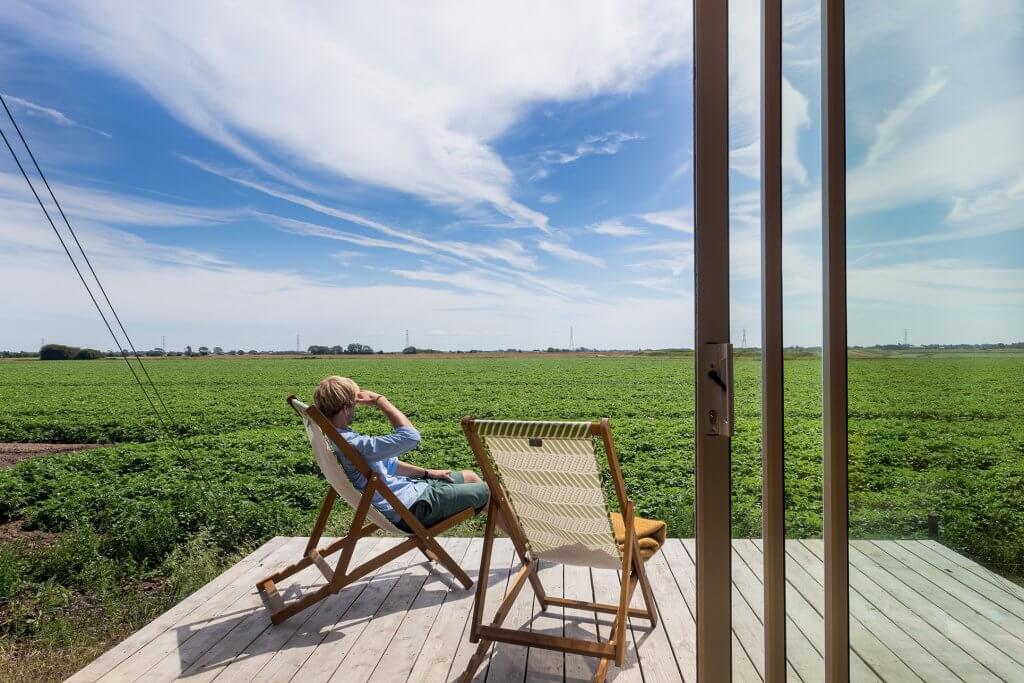
The couple now enjoys beautiful views of the countryside
The accommodation is built up in timber frame, with cladding in blackened larch and corrugated galvanized steel. “We charred the larch with a blow torch and it’s weathering really nicely,” says Freddie. “The exterior cladding has shadow gaps, so as well as the usual blue felt membrane I also used some black UV facade to avoid the colour showing through and to be extra sure there would be no leaks.”
One big challenge with the main structural work was making sure that the rainwater didn’t run in via the edges of the corrugated roof. “We found some sponges that had the same profile as the steel and wedged them into the gaps,” says Freddie. That kind of ingenious problem-solving flows throughout this creative build.
Need more advice on building an eco home?On 22nd July 2021, Chris Bates, Editor of Build It, will be hosting a virtual discussion with some timber frame specialists, about the eco and sustainability credentials of timber construction. The FREE webinar will look at all aspects of eco building, including design, energy efficiency, structural systems and airtightness. |
Interior design
The cabin was designed with wooden steps leading up to the foldaway deck, which is operated on a winch system. Huge, steel-framed sliding doors by Duration lead from here into the bespoke kitchen and sitting area. The interior is predominantly clad in birch plywood. “This part of the scheme was inspired by past projects I’ve worked on with architects WAMdesign,” says Freddie.
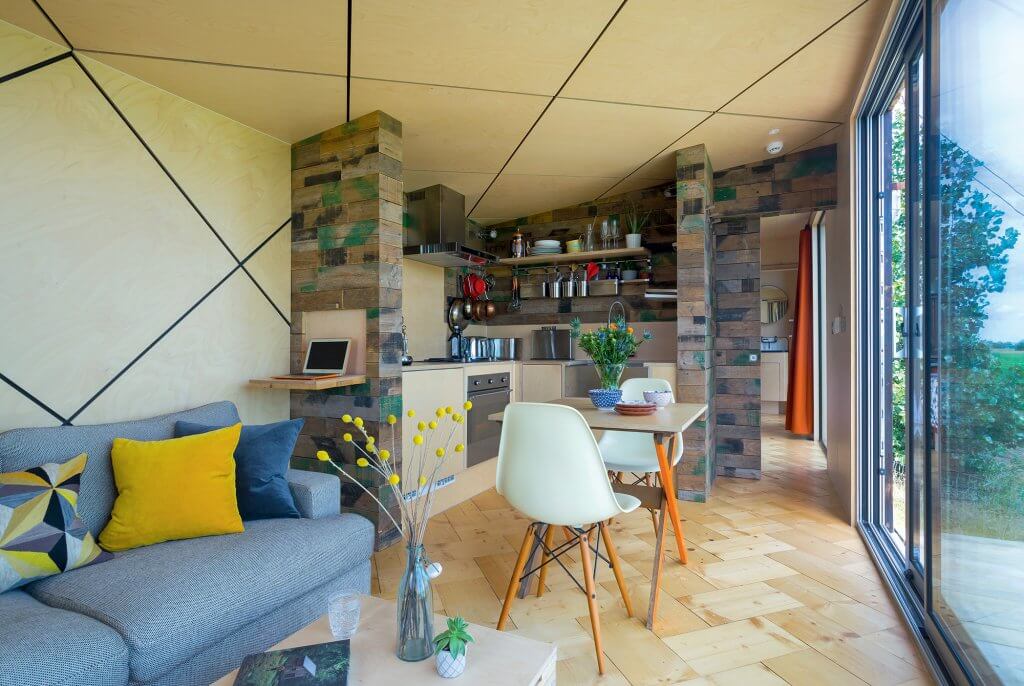
The wow-factor ceiling features a diamond pattern. LED strips are concealed within the gaps
The living area houses a log burning stove, window seat, sofa and pallet coffee table set on casters. The wow-factor ceiling features a diamond pattern which runs down the wall on one side. Shadow gaps conceal LED strip lights, which give a stunning effect when illuminated.
A small dining table and chairs divides the space from the bespoke ply kitchen, where the walls are made from potato crates from the farm. The cosy bedroom leads off the kitchen, via a pocket door, which in turn leads to the ensuite with Aqualisa shower and a jigsaw-patterned ceiling.
Freddie was particularly conscious of the importance of creating a sense of space, given that the structure is only 3m wide.
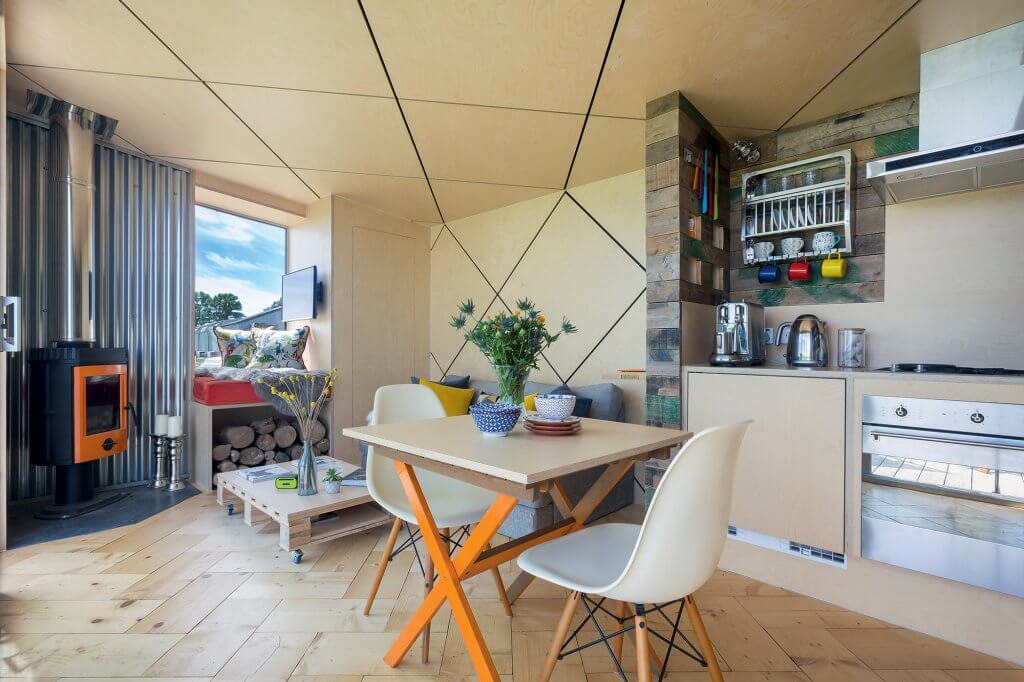
The couple chose an open-plan layout in the common area to maximise space and natural light
The floor-to-ceiling windows in the bedroom and ensuite are crucial, allowing in plenty of light and offering wonderful views across the marsh. They also help heat the building in the colder months.
“Solar gain through the glazing is massive,” he says. “In winter, it really helps to warm the cabin. It can get a bit hot in summer but we were careful to be mindful of cross-ventilation.” One example of this is the window cleverly built into the potato-crate headboard in the bedroom.
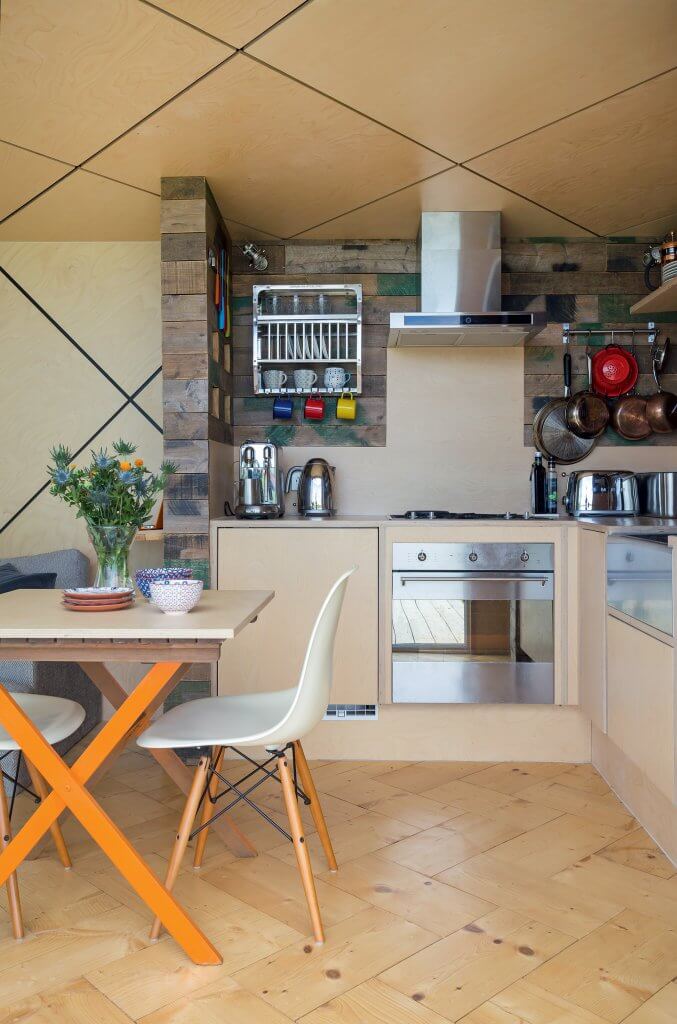
The ply-wood from the interior walls required large amounts of work to achieve the finished look
The bedroom radiator and bathroom towel rail are fashioned from copper pipes, while the log burner heats the rest of the cabin. “The appliances are super-energy efficient. The idea is that when we move the trailer and are off-grid, it runs off a solar-powered lithium battery. The downside is the waste tank, which I have to empty,” he says. “When we want to be mobile, all we need to do is fold up the decking, take off the acrows and detach the utility supplies.”
Building on a budget
Katie was involved throughout and was a massive help when it came to dressing the cabin when the main works were complete. “She was very much part of the building process and had some great ideas. She was also the one to add all the finishing touches,” says Freddie.
The project hasn’t been without its issues, however, and costs grew beyond the tight initial £30,000 budget (the amount Freddie had in savings). “I’d gotten so far with the project that I didn’t want to scrimp,” he says. “Living with my mum meant we were able to save, plus I borrowed some money.” Much of this extra cash went into getting the interiors right.
The plywood – which forms most of the interior walls, ceilings and kitchen – was particularly challenging to use because of the huge amount of sanding and varnishing required. In addition, it hasn’t proved the most sensible choice for the kitchen worktop.
“The birch ply goes brittle when you get water on it so it’s not very practical. I actually wanted a Formica top but I wasn’t organised enough and the lead time was too long,” says Freddie.
The reclaimed scaffold-board floor, which is arranged in a herringbone pattern, also posed a few problems. “As much as I love the effect, it was a three-week, two-man job to lay it. We had to cut all the boards, plane and sand them, drill and fix them, plug the holes with dowel, sand them again and varnish them,” says Freddie.
“It’s unique but if I were to do it again, I would use an engineered wood or a laminate floor. They are so hard wearing and such good quality these days.”
Creative solutions
Living in such a confined space has obvious drawbacks – but the couple are lucky in that they’re able to keep a lot of their bric-a-brac in the main farmhouse.
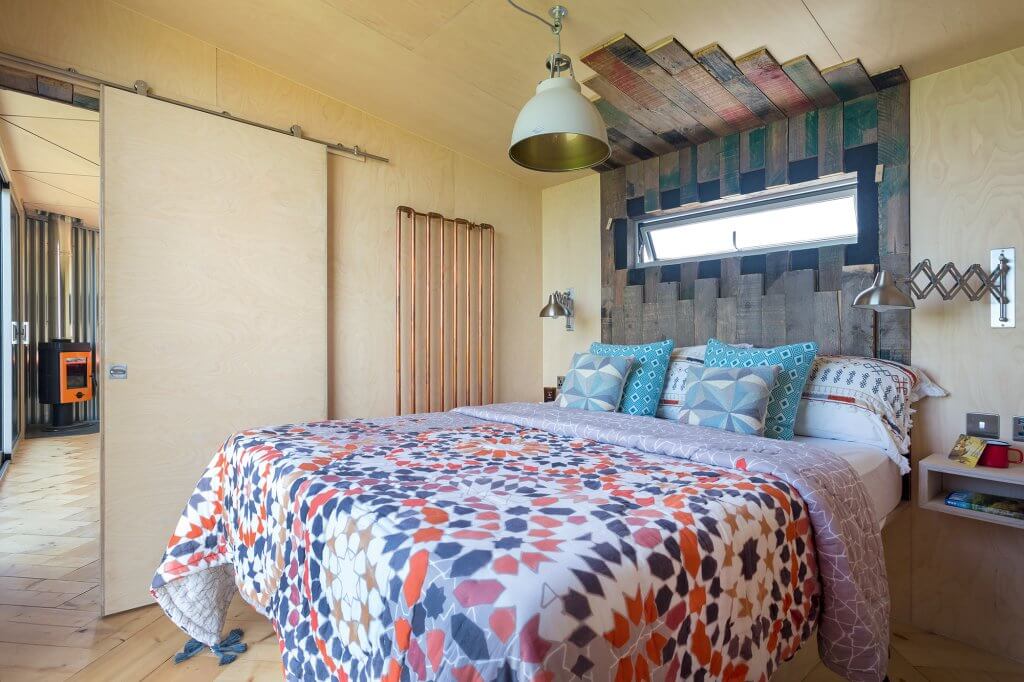
Bedroom in mobile timber frame cabin
Nevertheless, Freddie does regret not building more storage and other practical zones into the cabin. “Living and working on a farm means that we have lots of muddy footwear so it would have been good to incorporate a boot room,” he says.
Even so, there’s plenty to love about this project. One stroke of genius was to include a full-length mirror on the sliding door that leads through to the ensuite – when pulled back, this matches up perfectly with the built-in dressing table.
Another clever feature is the window seat next to the log burner. As the glazed unit projects slightly out of the main structure, the perch doesn’t encroach too much on interior space – and Freddie’s turned the area beneath it into a wood store.
“I love the light that comes in through this window and the way it squares the view, but the decision to make it protrude was an afterthought,” says Freddie. “It proved tricky to waterproof so in the end we clad it with fibreglass.”
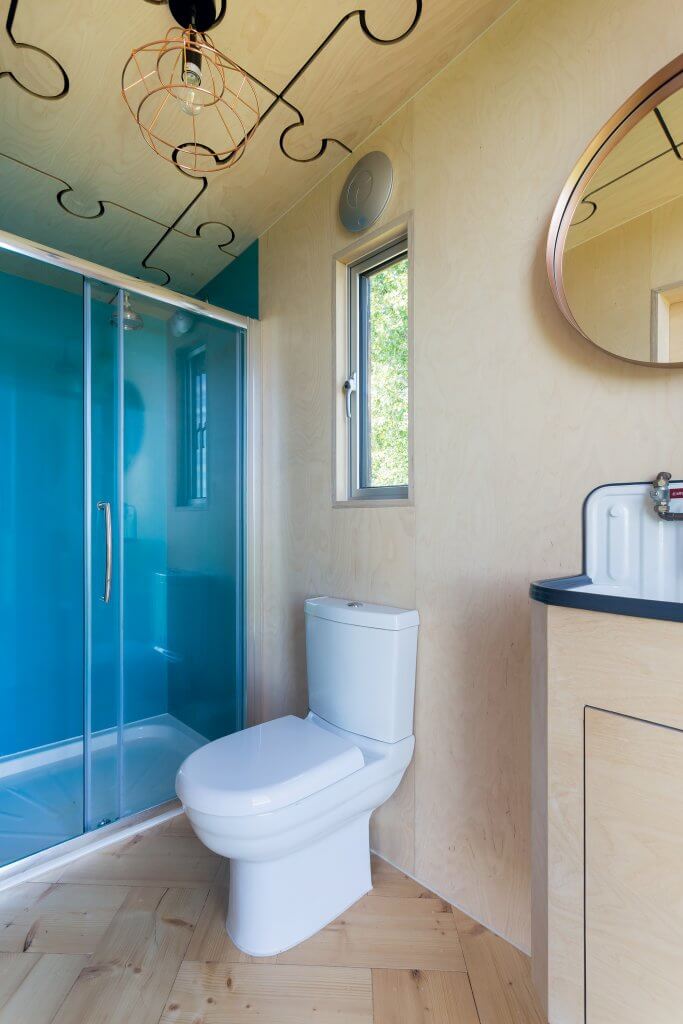
The couple chose to build an ensuite
Despite the challenges this hands-on scheme brought, Freddie is keen to tackle another self-build in the future. “Being in control and able to experiment was great,” he says. “I am really pleased with the quality. It came with a lot of graft but it’s lived up to my expectations. It has given everyone who worked on the project a real sense of achievement.”
Freddie even has a few ideas up his sleeve for when the couple decide they need a bigger home. “There’s a cottage on the farm and I’d love to knock it down and replace it with two ultra-modern, A-frame houses with lots of glass,” he says. For now, however, the cabin suits the pair and their lifestyle.
“It’s very cheap to run, which means we can save money,” says Freddie. What’s more, living in a pared-down environment in such a beautiful spot means they are able to enjoy the simple things in life. “We like to get the fire pit going and sit on the deck listening to Desert Island Discs,” says Freddie.
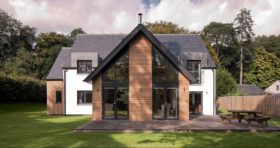
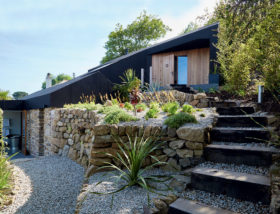






























































































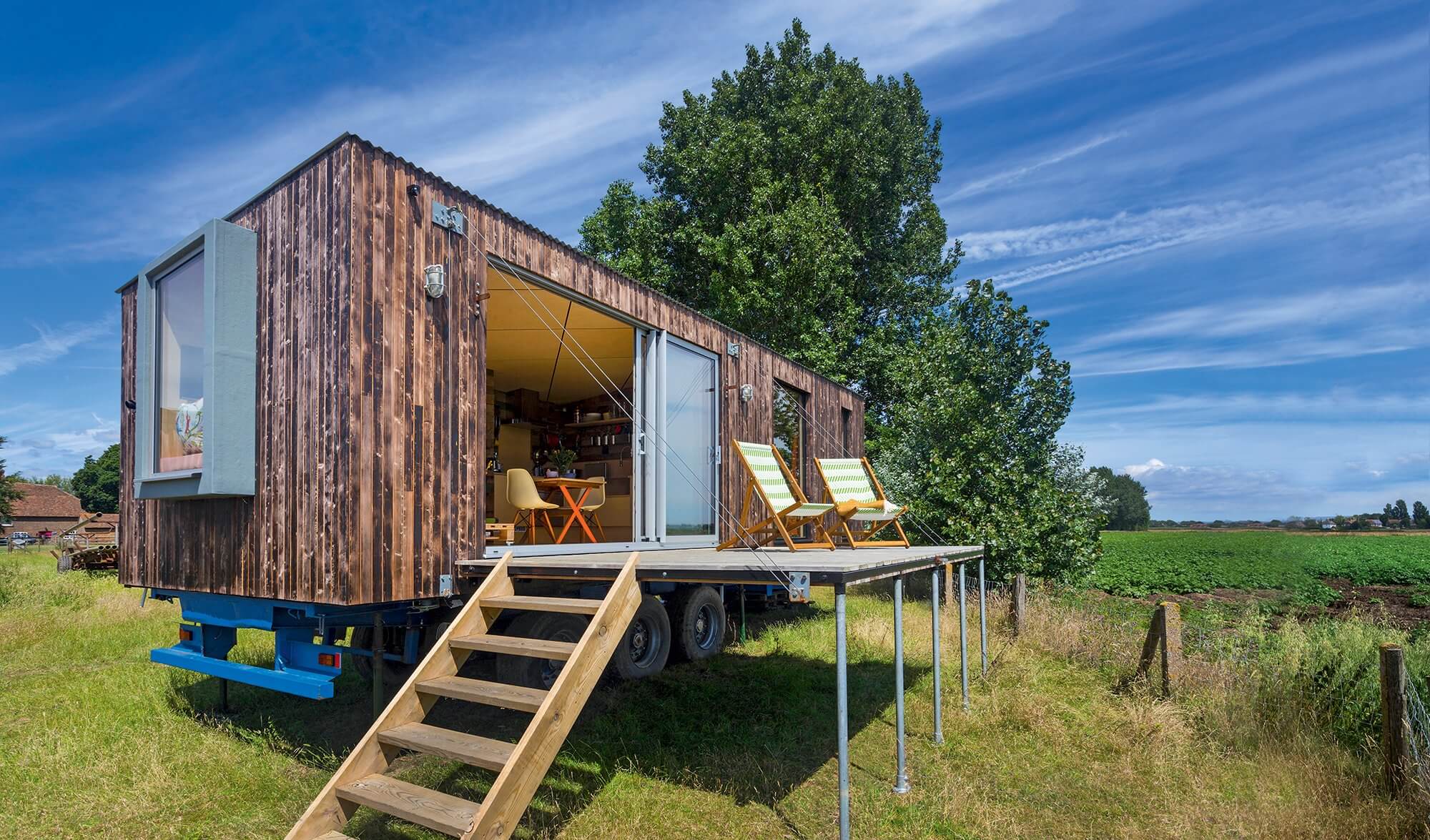
 Login/register to save Article for later
Login/register to save Article for later
